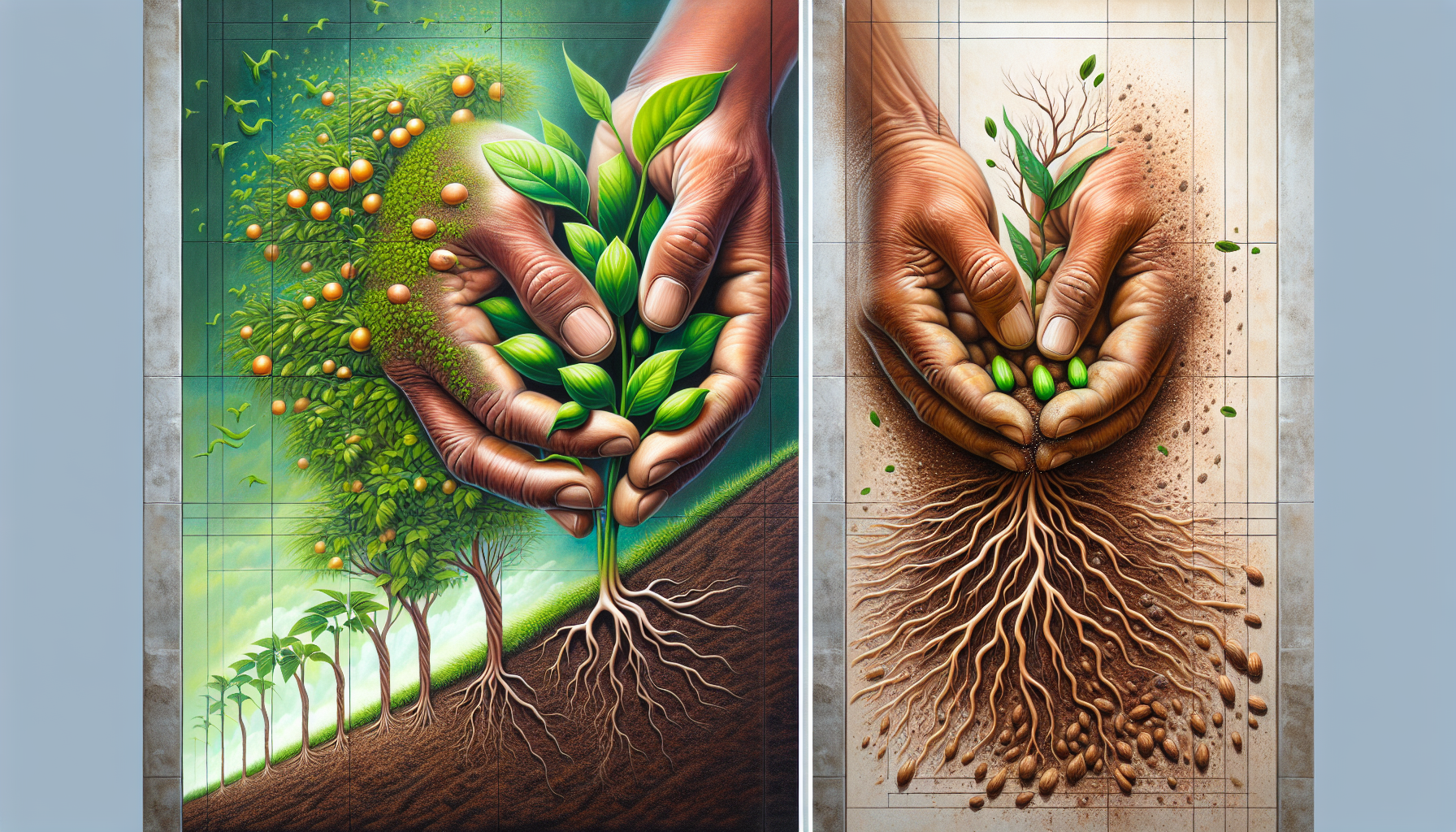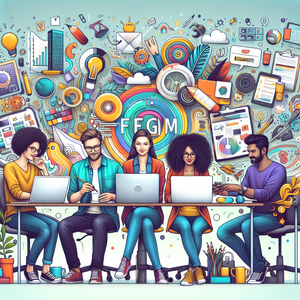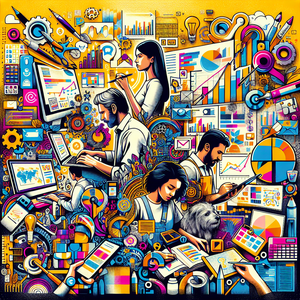Navigating the Gig Economy: Freelancing as a Beginner Graphic Designer

The gig economy is characterized by short-term contracts and freelance work as opposed to permanent jobs. With digital platforms like Upwork, Fiverr, and 99designs, graphic designers can connect with clients from around the globe. This shift towards freelance work allows designers to choose projects that align with their interests and expertise, offering a level of flexibility that traditional employment often lacks. However, breaking into this space can be daunting, especially for those just starting their careers. The challenges of establishing a brand, finding clients, and maintaining a stable income can be overwhelming, but with the right strategies, success is attainable.
Finding Clients: Strategies for Success
Freelancing websites are a great starting point for beginners. Creating a profile on platforms like Upwork or Fiverr allows you to showcase your portfolio and attract potential clients. Be sure to include a detailed description of your skills and services, and utilize a strong portfolio to demonstrate your design capabilities. High-quality images of your work, testimonials from past clients, and a clear outline of your offerings can significantly improve your chances of securing jobs.
Networking
Building a network can significantly enhance your chances of finding clients. Attend industry events, webinars, and workshops to meet fellow designers and potential clients. Engaging in conversations with other creatives can lead to collaborations and referrals. Additionally, utilizing social media platforms like LinkedIn and Instagram to connect with industry professionals and share your work can increase your visibility. Regularly posting design projects or insights can establish you as a knowledgeable figure in the field.
Referrals
Don’t underestimate the power of word-of-mouth. Encourage satisfied clients to refer you to others, and consider offering a discount for referrals to incentivize them. Having a strong referral system not only helps you gain new clients but also builds trust in your services. Happy clients are often willing to spread the word about your talents, which is invaluable for beginners looking to establish a client base.
Setting Rates: Finding Your Value
Determining how much to charge can be tricky for new freelancers. Here are some strategies to help you establish your rates.
Research Industry Standards
Look into what other graphic designers with similar experience levels are charging. Websites like Glassdoor and the AIGA Design Salary Guide can provide valuable insights. Understanding the market rates will help you position yourself competitively while ensuring you are not undervaluing your work.
Consider Your Skills and Experience
While you may be new to freelancing, if you have specialized skills or a strong portfolio, you can justify higher rates. Don’t undervalue your work; instead, focus on the unique perspectives and creativity you bring to the table. As you gain more experience and complete more projects, you can gradually increase your rates.
Offer Tiered Pricing
Create different packages for your services. For instance, you could offer a basic logo design at a lower price, with more comprehensive branding packages available at higher rates. This approach allows clients to choose an option that fits their budget while still enabling you to maximize your earnings. It also showcases your versatility as a graphic designer.
Time Management: Juggling Projects Effectively
Freelancing often means managing multiple projects simultaneously. Here are some tips to maintain efficiency.
Set Clear Boundaries
Define your working hours and stick to them. This helps prevent burnout and ensures you maintain a healthy work-life balance. Establishing boundaries is crucial for long-term sustainability in freelancing. Communicate your availability to clients and encourage them to respect these limits.
Use Project Management Tools
Tools like Trello, Asana, or Notion can help you keep track of deadlines and tasks. Organizing your projects visually can improve productivity and reduce stress. Create boards or lists for different clients and projects, allowing you to monitor progress and prioritize tasks effectively.
Prioritize Communication
Keeping clients informed about your progress is essential. Regular updates can help manage expectations and build trust. Clear communication can also reduce misunderstandings and foster a positive working relationship, which is beneficial for securing future projects.
Freelancing as a beginner graphic designer in the gig economy presents both exciting opportunities and unique challenges. By leveraging online platforms, networking effectively, setting competitive rates, and mastering time management, you can successfully navigate this dynamic landscape. Embrace the freedom that freelancing offers, and remember that persistence and adaptability are key. With dedication and strategic planning, you can build a fulfilling freelance career that aligns with your passions and professional goals. As you embark on this journey, keep honing your skills, stay informed about industry trends, and don't shy away from seeking support from fellow creatives. In the ever-evolving world of design, your potential for growth is limitless.
Freelance UI/UX Designer
Startups, tech companies, and digital marketing agencies
Core Responsibilities
Collaborate with clients to understand their design needs and user experience goals.
Create wireframes, prototypes, and high-fidelity mockups to visualize design concepts.
Conduct user research and usability testing to inform design decisions.
Required Skills
Proficiency in design tools such as Sketch, Adobe XD, or Figma.
Strong understanding of user-centered design principles and best practices.
Experience in creating responsive designs for web and mobile applications.
Brand Identity Designer
Advertising agencies, startups, and small businesses
Core Responsibilities
Develop comprehensive brand identity systems, including logos, typography, and color palettes.
Create brand guidelines to ensure consistency across all media.
Work closely with clients to understand their vision and market positioning.
Required Skills
Expertise in Adobe Illustrator and Photoshop, with a strong portfolio showcasing branding projects.
Ability to communicate design concepts and rationale effectively.
Understanding of market trends and consumer behavior to create relevant brand identities.
Social Media Graphic Designer
Digital marketing agencies, brands with a strong social media presence, and influencers
Core Responsibilities
Design engaging graphics and visual content for various social media platforms.
Collaborate with marketing teams to ensure alignment with overall campaign goals.
Monitor social media trends to create timely and relevant graphics.
Required Skills
Proficiency in Adobe Creative Suite (Photoshop, Illustrator) and familiarity with video editing tools.
Strong understanding of social media platforms and best practices for visual content.
Ability to work under tight deadlines and manage multiple projects simultaneously.
Motion Graphic Designer
Video production companies, advertising agencies, and corporate marketing departments
Core Responsibilities
Create animated graphics and videos for marketing campaigns, social media, and presentations.
Collaborate with creative teams to develop storyboards and scripts for animations.
Edit and refine animations based on client feedback and project requirements.
Required Skills
Proficiency in motion graphics software such as Adobe After Effects and Cinema 4D.
Strong storytelling skills and an eye for visual composition.
Experience with sound design and video editing is a plus.
Print Designer
Print shops, advertising agencies, and companies needing promotional materials
Core Responsibilities
Design a variety of printed materials, including brochures, posters, and packaging.
Work with printers to ensure color accuracy and quality in final products.
Manage multiple projects, ensuring timely delivery and adherence to budgets.
Required Skills
Strong proficiency in Adobe InDesign, Illustrator, and Photoshop.
Knowledge of print production processes, including file preparation and print specifications.
Attention to detail and strong organizational skills for project management.


